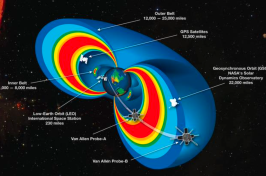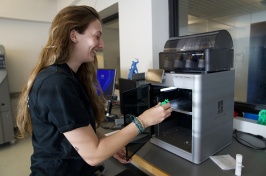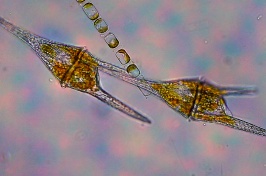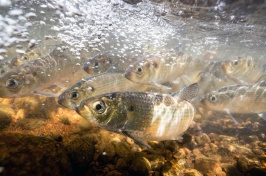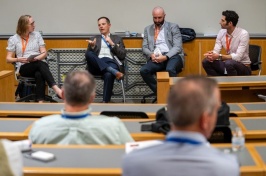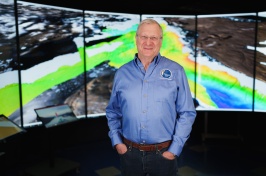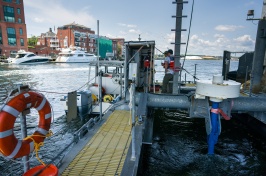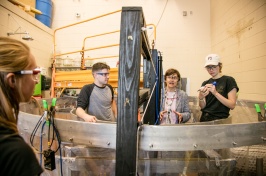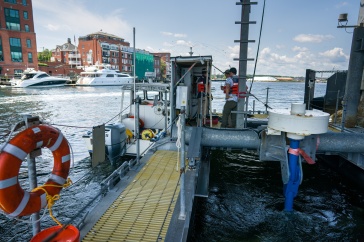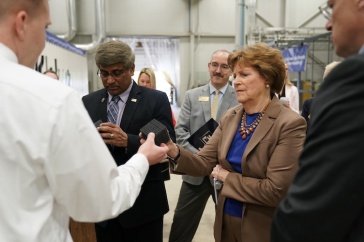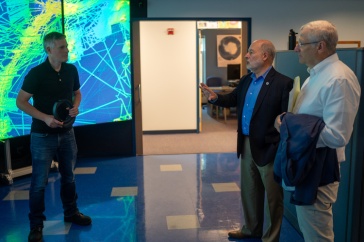 |
It could be the subject of a science fiction B movie: Space travelers to Mars bombarded by cosmic rays. But it’s science fact, the primary finding of major research out of UNH’s Space Science Center that has implications on the future of deep-space travel.
In an article published last fall in the journal Space Weather, associate professor of physics Nathan Schwadron details how periods of weak solar activity lead to an increase in cosmic radiation levels, limiting the amount of time an astronaut can spend in space without risking radiation-induced cancer.
Using data from the Cosmic Ray Telescope for the Effects of Radiation (CRaTER) on NASA’s Lunar Reconnaissance Orbiter, the research found that a 30-year-old male astronaut could spend about 400 days in space—roughly the duration of a mission to Mars and back— before he exceeded NASA’s limits on safe exposure to cosmic rays. A female astronaut of the same age would hit that limit in just under 300 days. CRaTER’s “tissue-equivalent plastic,” a material that mimics human muscle, measures the effects of radiation dosage over time.
The issue, Schwadron explains, is that we’re currently experiencing an abnormally long period of weak solar activity. An active sun has frequent sunspots, which intensify the sun’s magnetic field. That magnetic field is dragged out through the solar system by the solar wind and deflects galactic cosmic rays away from the solar system—and from any astronauts in transit.
For most of the space age, the sun’s activity ebbed and flowed like clockwork in 11-year cycles, with six- to eight-year lulls in activity, called solar minimum, followed by two- to three-year periods when the sun is more active.
“However, starting in about 2006, we observed the longest solar minimum and weakest solar activity observed in the space age,” says Schwadron. “There’s been a sustained change in the way the sun is behaving. Over time, it’s become increasingly clear that the space environment is not returning to normal.”
The possibility that this current extended solar minimum could be part of a long-term trend prompted Schwadron and his colleagues—including UNH researchers Colin Joyce, Marty Quinn, Charles Smith, Sonya Smith, Harlan Spence and Jody Wilson, all of EOS—to probe its implications on long-term space travel.
Schwadron presents these results, which were the capstone article of a special CRaTER-focused issue of Space Weather, with the characteristic caution of a scientist. Deeper understanding of this unusually prolonged solar minimum will better inform NASA on the risks to astronauts engaged in long-term space travel.
Nonetheless, Schwadron says that while these solar conditions “are not necessarily a showstopper for long-duration missions to the moon, an asteroid, or even Mars, galactic cosmic ray radiation in particular remains a significant and worsening factor that limits mission durations.”
Originally published in UNH Magazine—Winter 2015 Issue
-
Written By:
Beth Potier | UNH Marketing | beth.potier@unh.edu | 2-1566







